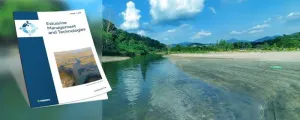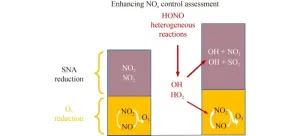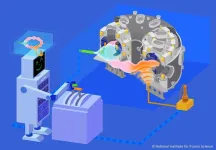(Press-News.org) A new statistical tool developed by researchers at the University of Chicago improves the ability to find genetic variants that cause disease. The tool, described in a new paper published January 26, 2024, in Nature Genetics, combines data from genome wide association studies (GWAS) and predictions of genetic expression to limit the number of false positives and more accurately identify causal genes and variants for a disease.
GWAS is a commonly used approach to try to identify genes associated with a range of human traits, including most common diseases. Researchers compare genome sequences of a large group of people with a specific disease, for example, with another set of sequences from healthy individuals. The differences identified in the disease group could point to genetic variants that increase risk for that disease and warrant further study.
Most human diseases are not caused by a single genetic variation, however. Instead, they are the result of a complex interaction of multiple genes, environmental factors, and host of other variables. As a result, GWAS often identifies many variants across many regions in the genome that are associated with a disease. The limitation of GWAS, however, is that it only identifies association, not causality. In a typical genomic region, many variants are highly correlated with each other, due to a phenomenon called linkage disequilibrium. This is because DNA is passed from one generation to next in entire blocks, not individual genes, so variants nearby each other tend to be correlated.
“You may have many genetic variants in a block that are all correlated with disease risk, but you don't know which one is actually the causal variant,” said Xin He, PhD, Associate Professor of Human Genetics, and senior author of the new study. “That's the fundamental challenge of GWAS, that is, how we go from association to causality.”
To make the problem even harder, most of the genetic variants are located in non-coding genomes, making their effects difficult to interpret. A common strategy to address these challenges is using gene expression levels. Expression quantitative trait loci, or eQTLs, are genetic variants associated with gene expression.
The rationale of using eQTL data is that if a variant associated with a disease is an eQTL of some gene X, then X is possibly the link between the variant and the disease. The problem with this reasoning, however, is that nearby variants and eQTLs of other genes can be correlated with the eQTL of the gene X while affecting the disease directly, leading to a false positive. Many methods have been developed to nominate risk genes from GWAS using eQTL data, but they all suffer from this fundamental problem of confounding by nearby associations. In fact, existing methods can generate false positive genes more than 50% of the time.
In the new study, Prof. He and Matthew Stephens, PhD, the Ralph W. Gerard Professor and Chair of the Departments of Statistics and Professor of Human Genetics, developed a new method called causal-Transcriptome-wide Association studies, or cTWAS, that uses advanced statistical techniques to reduce false positive rates. Instead of focusing on just one gene at a time, the new cTWAS model accounts for multiple genes and variants. Using a Bayesian multiple regression model, it can weed out confounding genes and variants.
“If you look at one at a time, you'll have false positives, but if you look at all the nearby genes and variants together, you are much more likely to find the causal gene,” He said.
The paper demonstrates the utility of this new technique by studying genetics of LDL cholesterol levels. As one example, existing eQTL methods nominated a gene involved in DNA repair, but the new cTWAS approach pointed at a different variant in the target gene of statin, a common drug used to treat high cholesterol. In total, cTWAS identified 35 putative causal genes of LDL, more than half of which have not been previously reported. These results point to new biological pathways and potential treatment targets for LDL.
The cTWAS software is now available to download from He’s lab website. He hopes to continue working on it to extend its capabilities to incorporate other types of ‘omics data, such as splicing and epigenetics, as well as using eQTLs from multiple tissue types.
“The software will allow people to do analyses that connect genetic variations to phenotypes. That's really the key challenge facing the entire field,” He said. “We now have a much better tool to make those connections.”
Additional authors on the study, “Adjusting for genetic confounders in transcriptome-wide association studies leads to reliable detection of causal genes,” include Siming Zhao, Wesley Crouse, Sheng Qian, and Kaixuan Luo from the University of Chicago.
END
New tool improves the search for genes that cause diseases
Statistical model developed by UChicago researchers incorporates genome and gene expression data to reliably identify causal genes.
2024-01-26
ELSE PRESS RELEASES FROM THIS DATE:
Glacier melting destroys important climate data archive
2024-01-26
As part of the Ice Memory initiative, PSI researchers, with colleagues from the University of Fribourg and Ca’ Foscari University of Venice as well as the Institute of Polar Sciences of the Italian National Research Council (CNR), analysed ice cores drilled in 2018 and 2020 from the Corbassière glacier at Grand Combin in the canton of Valais. A comparison of the two sets of ice cores published in Nature Geoscience shows: Global warming has made at least this glacier unusable as a climate archive.
Reliable information about the past climate and air pollution can no longer be obtained from ...
Soap bark discovery offers a sustainability booster for the global vaccine market
2024-01-26
A valuable molecule sourced from the soapbark tree and used as a key ingredient in vaccines, has been replicated in an alternative plant host for the first time, opening unprecedented opportunities for the vaccine industry.
A research collaboration led by the John Innes Centre used the recently published genome sequence of the Chilean soapbark tree (Quillaja saponaria) to track down and map the elusive genes and enzymes in the complicated sequence of steps needed to produce the molecule QS-21.
Using transient expression techniques developed at the John Innes Centre, the team reconstituted the ...
Writing by hand may increase brain connectivity more than typing on a keyboard
2024-01-26
As digital devices progressively replace pen and paper, taking notes by hand is becoming increasingly uncommon in schools and universities. Using a keyboard is recommended because it’s often faster than writing by hand. However, the latter has been found to improve spelling accuracy and memory recall.
To find out if the process of forming letters by hand resulted in greater brain connectivity, researchers in Norway now investigated the underlying neural networks involved in both modes of writing.
“We ...
Computers are quick and reliable in counting seals
2024-01-26
Computers can count seals from aerial photographs with lightning speed and reliability. Based on their spatial patterns, the tiny dots on the aerial images can even be assigned to one of the two major species of seals in the Wadden Sea. That is shown in the thesis that marine biologist Jeroen Hoekendijk will defend on January 26 in Wageningen. "To better understand if and how marine mammals like seals are affected by climate change and the disappearance of sea ice, this help from artificial intelligence (AI) in observations is crucial," Hoekendijk said. Hoekendijk carried out his research at the Royal Netherlands Institute ...
Estuarine Management and Technologies: A brand new journal streamlines innovation in the conservation of estuarine ecosystems
2024-01-26
Where freshwater rivers meet seas and oceans lies a scientifically intriguing and ecologically important type of ecosystem. As estuarine ecosystems provide various and diverse services to humanity and the planet at large, including food security and natural buffers and filters in the events of storms and water pollution, there has been an increasing need to facilitate and support the exchange of research findings and ideas related to their conservation and sustainable management by means of new-age technology and novel approaches.
This is how a team of renowned and passionate ...
The missing link: Recent study explores the connection between NOx control and SNA, O3 reduction
2024-01-26
Sulfate-nitrate-ammonium (SNA) and other atmospheric aerosols play a significant role in influencing both atmospheric and environmental conditions. These aerosols impact climate directly through scattering and absorbing solar radiation, thus influencing the Earth's radiative balance. The presence of high concentrations of aerosols can lead to the formation of haze and reduce air quality, affecting human health and transportation. Furthermore, the fine particulate matter (PM2.5 and PM10) within aerosols poses health risks ...
Cultural encounters of landscape architects Xiaoxiang Sun and Lawrence Halprin
2024-01-26
“From nature to nature” is the major goal of landscape design. The former is the idea of nature, i.e., landscape architects regard nature as the archetype of design; the latter is the experience of nature, i.e., landscape architects hope people can perceive the natural atmosphere through designed landscape. In this sense, the transformation from idea to experience of nature refers to the process of landscape design, which materializes landscape. According to this, this article focuses on the following topics: 1) what role does nature play as the origin of the landscape design theory; 2) how does nature as an idea promote ...
First demonstration of predictive control of fusion plasma by digital twin
2024-01-26
Fusion energy is being developed as a solution to global energy problems. In particular, the magnetic confinement method, in which ultra-high temperature plasma is confined by a magnetic field, is the most advanced and is considered to be the most promising method for fusion reactors. By this method, the plasma is confined in the reactor in a high-temperature, high-density state by a magnetic field, and the energy released by the fusion reaction in the plasma is converted into electricity. To realize this power generation method, it is essential to predict and control the complex behavior of fusion plasma. One possible control method is digital twin control, in which the fusion plasma ...
Single dose typhoid conjugate vaccine (TCV) provides lasting efficacy in children
2024-01-26
A single dose of the typhoid conjugate vaccine, Typbar TCV®, provides lasting efficacy in preventing typhoid fever in children ages 9 months to 12 years old, according to a new study conducted by researchers at University of Maryland School of Medicine’s (UMSOM) Center for Vaccine Development and Global Health (CVD) and led by in-country partners at the Malawi-Liverpool Wellcome Trust (MLW) Clinical Research Programme.
Results from the phase 3 clinical study were published today in The Lancet.
The ...
'Old smokers' and 'squalling newborns' among hidden stars spotted for first time
2024-01-26
'Hidden' stars including a new type of elderly giant nicknamed an 'old smoker' have been spotted for the first time by astronomers.
The mystery objects exist at the heart of our Milky Way galaxy and can sit quietly for decades – fading almost to invisibility – before suddenly puffing out clouds of smoke, according to a new study published today in the Monthly Notices of the Royal Astronomical Society.
An international team of scientists led by Professor Philip Lucas, of the University of Hertfordshire, made their ground-breaking discovery after monitoring almost a billion stars in infrared light during a 10-year survey ...
LAST 30 PRESS RELEASES:
This self-powered eye tracker harnesses energy from blinking and is as comfortable as everyday glasses
Adverse prenatal exposures linked to higher rates of mental health issues, brain changes in adolescents
Restoring mitochondria shows promise for treating chronic nerve pain
Nature study identifies a molecular switch that controls transitions between single-celled and multicellular forms
USU chemists' CRISPR discovery could lead to single diagnostic test for COVID, flu, RSV
Early hominins from Morocco reveal an African lineage near the root of Homo sapiens
Small chimps, big risks: What chimps show us about our own behavior
We finally know how the most common types of planets are created
Thirty-year risk of cardiovascular disease among healthy women according to clinical thresholds of lipoprotein(a)
Yoga for opioid withdrawal and autonomic regulation
Gene therapy ‘switch’ may offer non-addictive pain relief
Study shows your genes determine how fast your DNA mutates with age
Common brain parasite can infect your immune cells. Here's why that's probably OK
International experts connect infections and aging through cellular senescence
An AI–DFT integrated framework accelerates materials discovery and design
Twist to reshape, shift to transform: Bilayer structure enables multifunctional imaging
CUNY Graduate Center and its academic partners awarded more than $1M by Google.org to advance statewide AI education through the Empire AI consortium
Mount Sinai Health system receives $8.5 million NIH grant renewal to advance research on long-term outcomes in children with congenital heart disease
Researchers develop treatment for advanced prostate cancer that could eliminate severe side effects
Keck Medicine of USC names Christian Pass chief financial officer
Inflatable fabric robotic arm picks apples
MD Anderson and SOPHiA GENETICS announce strategic collaboration to accelerate AI-driven precision oncology
Oil residues can travel over 5,000 miles on ocean debris, study finds
Korea University researchers discover that cholesterol-lowering drug can overcome chemotherapy resistance in triple-negative breast cancer
Ushikuvirus: A newly discovered giant virus may offer clues to the origin of life
Boosting the cell’s own cleanup
Movement matters: Light activity led to better survival in diabetes, heart, kidney disease
Method developed to identify best treatment combinations for glioblastoma based on unique cellular targets
Self-guided behavioral app helps children with epilepsy sleep earlier
Higher consumption of food preservatives is associated with an increased risk of type 2 diabetes
[Press-News.org] New tool improves the search for genes that cause diseasesStatistical model developed by UChicago researchers incorporates genome and gene expression data to reliably identify causal genes.








